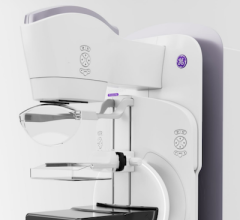
Getty Images
June 22, 2021 — New American College of Radiology (ACR) and Society of Breast Imaging (SBI) breast cancer screening guidelines call for heightened screening attention for transgender individuals, Black women and other often overlooked or underserved populations. The guidelines are published in the Journal of the American College of Radiology (JACR).
Involving factors such as sex assigned at birth, hormone use and surgical histories place transgender persons at increased risk for breast cancer.
“Due to hormone use, biological males transitioning to female are at increased risk for breast cancer compared to other males,” said Emily F. Conant, MD, FSBI. “Biological females transitioning to male who do not undergo mastectomy remain at their previous risk for breast cancer. Since these individuals are less likely to have regular checkups and be routinely screened, clear guidance is especially important.”
New data from Sweden shows that chemotherapy is much more effective in screened women vs. unscreened women. Using similar treatments, mortality from breast cancer is reduced more than 40% in the screened women. Advanced cancers also are significantly reduced. Treatment advances are important, but cannot overcome the disadvantage of being diagnosed with an advanced-stage tumor.
“Minority women are 72% more likely to be diagnosed with breast cancer before age 50, are 58% more likely to be diagnosed with advanced stage disease prior to age 50, and are 127% more likely to die of breast cancer before age 50 compared to white women,” said guidelines primary author Debra Monticciolo, MD, FACR. “It is vital that women start screening at age 40. Delaying screening until age 50 hurts all women, but particularly harms minority women.”
The ACR and SBI continue to recommend that women have a risk assessment at age 30 to see if screening prior to age 40 is needed, and those at average breast cancer risk begin screening at age 40. The societies also recommend that women continue screening past age 74, unless severe comorbidities limit life expectancy. Women previously diagnosed with breast cancer should be screened with magnetic resonance imaging (MRI).
National Cancer Institute Surveillance, Epidemiology, and End Results data show that, since mammography became widespread in the 1980s, the United States breast cancer death rate in women — unchanged for the prior 50 years — has dropped 40%. Breast cancer deaths in men who have the same treatment as women but are not screened has not declined. Approximately 75% of breast cancers occur in women who have no family history of the disease and are not high-risk. One in six breast cancers occur in women ages 40-49.
“New evidence continues to support annual screening starting at age 40, with closer attention given to minority women in underserved populations,” said Stamatia Destounis MD, FACR, chief of the American College of Radiology Breast Imaging Commission. “Mounting data and more inclusive screening recommendations should remove any thought that regular screening is controversial.”
For more information: RadiologyInfo.org
Related breast cancer information:
Black and White Women Have Same Mutations Linked to Breast Cancer Risk
Hologic Launches $20M Initiative to Tackle Racial Disparities in Healthcare
Insurance Isn't Enough for Women at High Risk of Breast Cancer
Use of Breast MRI Screening in Women With Dense Breasts
Related Breast MRI Content:
VIDEO: Use of Breast MRI Screening in Women With Dense Breasts — Interview with Christiane Kuhl, M.D.
Abbreviated MRI Outperforms 3-D Mammograms at Finding Cancer in Dense Breasts
VIDEO: Explaining Dense Breasts — Interview with Christiane Kuhl, M.D.
VIDEO: Use of Breast MRI Improved Cancer Detection in Dense Breasts in Dutch Study — Interview with Gillian Newstead, M.D.
Technologies to Watch in Breast Imaging
Screening MRI Detects BI-RADS 3 Breast Cancer in High-risk Patients
Rapid Breast MRI Screening Improves Cancer Detection in Dense Breasts


 December 10, 2025
December 10, 2025 








